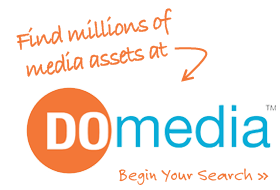Out-of-home (OOH) advertising has been a major advertising method for lifetimes—it provides a wide range of viewers, it’s an effective way to increase brand awareness, and, well, it’s a classic. Like almost anything that’s been around for so long, the industry has seen a variety of changes, making it both a different and a more accessible space.
For example, the industry has seen a noticeable increase in digital ads. Not only are more and more digital billboards popping up around the globe, but other digital formats such as retail TV screens, digital kiosks, digital walls, and airport ads are becoming more prevalent in the industry.
There are a few reasons for the increase in digital advertisements, one of the big ones being that there’s a quicker turnaround time, making it possible to get ads posted quicker. As opposed to “traditional” ad formats, like static billboards, digital ads can be uploaded to display almost instantly, which is great for any last-minute ad campaigns.
Also, advertisers often lean towards digital ads when working towards different advertising goals. Digital ads have a more “modern” appeal—rooted in technology, they can be preferred for advertisers in industries such as technology, media and entertainment, and even just younger companies. Plus, more can be done with them in terms of eye-catching ads—3D digital ads or any sort of moving image or video are popular these days.
Other changes in the industry include internal improvements and changes regarding processes. In the past few years, technological advancements to internal day-to-day tasks have been popping up everywhere, with features helping both media buyers and sellers, such as being able to pull inventory across platforms (like from Apparatix to DOmedia) and improvements to submitting and responding to RFPs.
Another recent change is that professionals are using data more than ever to plan, execute, and analyze their outdoor advertising campaign, helping to maximize effectiveness and turn plans into strategies.
OAAA wrote that in the future, advertisers are going to buy OOH for not only locations and audience, but also for intelligence provided about their customers, such as where they go and other products and services they purchase.
Advertisers using OOH have been using their ads to better connect with their audiences, as well. While this is something that’s happened with formats such as TV commercials in the past, using billboards to make personal connections is a more recent development, and by using methods such as making geographical or brand-specific references and appealing to the company’s demographic through use of language and imagery.




